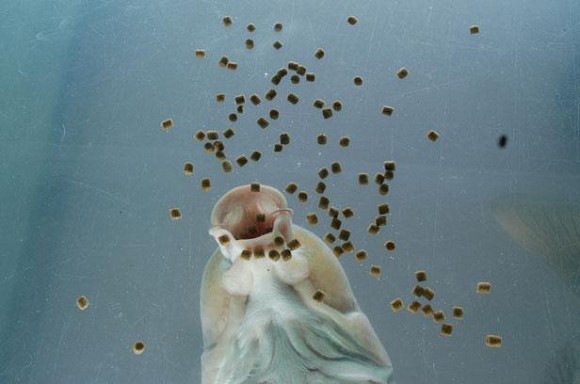
How do carp taste?
Learning the actual mechanics of how a carp lives and breaths. This time: taste
Carp have spread successfully throughout the world and possess a range of specialist feature that have enabled them to thrive in a wide variety of environments. These features are what make them such an interesting species to target and at times, enable them to avoid capture so well.
This time around, James Anderson, a fish expert and lecturer at Otley College in Suffolk, is going to take a look at one of the carp's key senses: taste. Carp have a very well developed sense of taste that they rely on to identify if an item is edible or not.
"Tasting takes place both to locate feed, before a food item is consumed and while items are being sorted in the mouth," states Anderson. "To a certain extent, carp can taste the same types of flavours and humans such as sweet, sour or bitter for example. It is easy to confuse smell and taste in fish but as a general rule, smell is used to locate food over longer distances while taste is used to located and identify food at close quarters."
Taste buds
"Much like humans, the carp use taste buds to taste food and the majority of taste buds are located on the lips and barbules that are used to assess if something is edible before a feed item is accepted. There are also a large number of taste buds located on the roof of the mouth on the palatal organ which aid with the sorting of feed items."
Feed stimulants
"The taste buds of a carp are microscopic measuring just a few microns in diameter, they are raised bumps that stand clear from the fish's skin. These sensory organs are triggered when they touch things, when it picks up a boilie for example and decides whether it likes it or not! The sensitive tip of the taste bud reacts to chemicals given off by the object it is tasting, these could be amino acids, sugars or Betaine for example. Once something edible is located, this information is passed back through the nervous system and a feed response is triggered. The majority of fishing baits contain a variety of these feed stimulants that get fish feeding enthusiastically making them more catchable."
Around the body
"As well as the taste buds located in and around the mouth, carp also have them spread on the pectoral and pelvic fins, down the body and underneath the head. These external sensory areas are used for pinpointing food such as bloodworm, enabling the carp to search out each item making them very effective at utilising all of the feed available in an area. Having found a bloodworm bed with its very good sense of smell, the carp can then use these taste buds located on fins and the body to search through the silt finding the exact location before consuming them."




